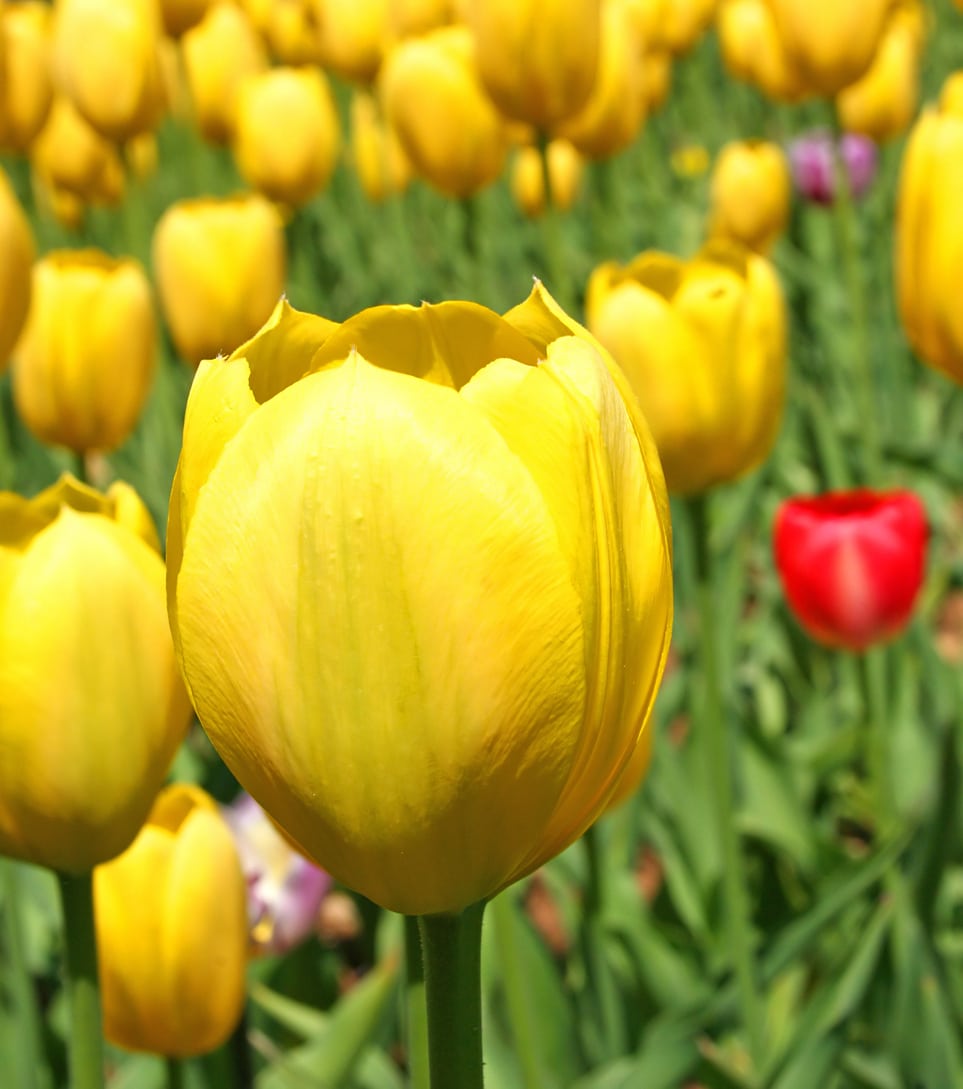What Are Darwin Tulips – Learn About Darwin Hybrid Tulip Care


Big, squarish, cup-shaped blooms are what first attracts the eye when viewing hybrid Darwin tulips. Or maybe it's their incredibly vibrant colors. Either way, these tulips are outstanding performers with incredible heat and cold tolerance. What are Darwin tulips? They are the happy result of a cross between two of the most well-known Dutch varieties.
What are Darwin Tulips?
There are hundreds of varieties of tulips, but Darwin hybrids have to be one of the most outstanding. They have large, delightful blooms in a myriad of colors and their sturdy stems stand up to wind and rain. These are one of the longer lived tulip varieties and are coveted as cut flowers. Growing Darwin tulips allows for years of intense color in the garden. These bulbs come in bold colors of red, yellow, pink, and ivory. They may be striped, marked with flames, feathers, or colored margins. These are single flowered bulbs with stems that get up to 20 to 28 inches (50-70 cm.) tall. Many of the flowers are scented and some even have ruffled petals. The bulbs produce for up to five years and also naturalize well. They can be easily forced indoors and can grow just as well in partial shade as full sun. Bloom time is generally mid-spring, making them a mid-season tulip.
Darwin Tulip Information
Darwin hybrid tulips are the result of a cross between single-late tulips and Emperor tulips. Specifically, Tulipa fosteriana 'Lefeber' and regular Darwin tulips. They were introduced in the 1950's through a Dutch breeding program. Sow bulbs in fall so they can gather the chilling hours required to bloom in spring. Like most bulbs, well-draining soil is best for growing Darwin tulips. If soil is low in nutrients, incorporate bone meal when installing the bulbs. The rule of thumb is to plant bulbs three times the height of the bulb. Give them a good watering after planting. If squirrels or other varmints are a problem, place screening or mulch over the location.
Darwin Hybrid Tulip Care
Once the blooms are spent, remove the flower stem and apply a slow release fertilizer around the root zone. This will gradually work into soil during watering and feed the bulb as it dies back. Leave the foliage on the plant until it turns yellow so the plants can gather solar energy. Tulips are so hardy they can be left in the ground over winter in most zones. If you live in a cooler zone, dig them up after the blooms are spent and store them in a cool, dry location. To force bulbs in hot climates, place bulbs in peat moss in the refrigerator for three months and then plant them in containers or in the ground.
Gardening tips, videos, info and more delivered right to your inbox!
Sign up for the Gardening Know How newsletter today and receive a free copy of our e-book "How to Grow Delicious Tomatoes".

Bonnie Grant is a professional landscaper with a Certification in Urban Gardening. She has been gardening and writing for 15 years. A former professional chef, she has a passion for edible landscaping.
-
 Grow ‘Karl Rosenfield’ Peony Plants For The Ultimate Frilly Border Beauties And Cut Flowers
Grow ‘Karl Rosenfield’ Peony Plants For The Ultimate Frilly Border Beauties And Cut FlowersFor frilly double magenta peony petals infused with a heady fragrance, grow ‘Karl Rosenfield’ peony plants. Here’s how to cultivate the ultimate plushy blooms
By Tonya Barnett
-
 10 Common Composting Problems That Can Spoil Your Garden Gold – Plus Easy Fixes
10 Common Composting Problems That Can Spoil Your Garden Gold – Plus Easy FixesLearn how to troubleshoot common composting issues before they ruin your stash – from bad smells and bugs to materials not breaking down as they should.
By Susan Albert